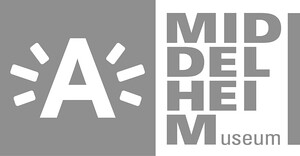CLUSTER
May 21–September 18, 2016
Middelheimlaan 61
2020 Antwerp
Belgium
T +32 3 288 33 60
From May 21 to September 18 the Belgian artist Peter Rogiers (b. 1967, Belgium) shows a selection from his body of work produced over the last 20 years in the Middelheim Museum. But CLUSTER is more than a classical retrospective. Rogiers combines his own work with several carefully chosen works of art from the Middelheim Museum’s permanent collection. The clusters are presented, almost like new “Gesamtkunstwerken,” on large pedestals in the Braem Pavilion, the Hortiflora and Het Huis.
Rich breeding ground
Peter Rogiers acquires inspiration for his own work from movements as diverse as Gothic, Reformation and Counter-Reformation, the Romantic tradition of Northern Europe and Art Brut. He also gains inspiration from the “comic” and “low culture” ranging from the 1960s to today: the mythological, divine or apocalyptic as it appears in comic strips, horror films, science fiction, heavy metal music, etc. “Combine those influences with his sober, working class background and a materialistic society…His wonderfully deformed interpretations of monstrosity arise from the hard collision of ecstasy, mystery and the apocalyptic. He seasons his creatures and golems…with a healthy portion of irony, scepticism and dark humour” (Preface Lilly Wei in: Peter Rogiers, ed. Sara Weyns, Lilly Wei, 2016, publisher: Kannibaal). His work balances between alarming and innocent, between dislocation and amazement.
Inspiring dialogue
When Rogiers’ work comes into contact with works in the permanent collection he sees this as a dialogue with the history of art from the last 100 years. Rogiers is mainly interested in those artists who are not embraced by or are less popular with the general public, the “Fremdkörper,” who undeniably make an important contribution to sculpture. They are detached from every hype and still relevant today. Using his intentionally subjective and surprising selection from the Middelheim collection, the artist instigates an inspiring dialogue about good taste versus bad taste, mainstream versus marginality and convention versus creativity. Through this intensified attention to the “sidelines” of art history, which still had not been analysed or discussed extensively, Rogiers wants to encourage observers to come up with a unique value judgement of the permanent collection works and of his own works.
Encounter between abstract and figurative
Pointed, aluminium palm trees contrast sharply with the soft foliage of the museum park. Figures, which border on the abstract and the representative, play hide-and-seek in and around the hedge rooms of the Hortiflora-garden. For a long time the artist balanced between figurative and abstract work, but for the time being he seems to have landed somewhere in the middle. This “dilemma” is also expressed in the combination of his own work and his selection from the permanent collection.
Action figures and travel shots
Rogiers makes a combination of collection pieces and his own work, including a large number of small sculptures, in the Braem Pavilion. Ten of them, the “Figurines,” are new, black bronze sculptures with an unruly, closed overtone. They place the artificiality of the object before every animistic quality. The Braem Pavilion invites observers to look for the more hidden elements that are revealed to attentive viewers. That same “slow look” is rewarded when observing the more than 100 drawings and etches that were gathered together for this exhibition. Repetitions, close-ups and the alternating perspectives of a travel shot stitch the works together and create one long ode to looking. This creates a bridge to his sculptures, which also require a circular movement from the observer.
CLUSTER
The title CLUSTER refers to the way that the exhibition is arranged. That literally occurs by bringing different works together (and therefore different paradigms, materials and scale ratios) on one large pedestal. In doing so, the artist constantly composes an area of tension. CLUSTER also stands for combining (contradictory) forces and the reinforcing effect when the right elements are brought together. To celebrate this exhibition, a new monograph published by Middelheim Museum and Hannibal/Hannibal Publishing will be presented to the public.


